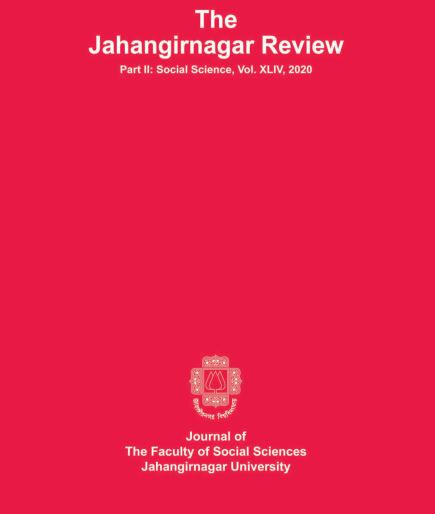Sidewalk and Traffic Intersections: An Urban Anthropological Evaluation of the Spatial Organization and Practices of Dhaka City
Main Article Content
Abstract
The ever-increasing demography of world’s one of the most densely populated cities of a so-called developing country and its inconsistent urban spatialization and urban practices have turned the urban geography of Dhaka into a chaotic one. Due to an irregular and oftentimes hegemonic “spatial practice” (borrowing Henri Lefebvre’s term), spaces on the urban landscape of Dhaka are used, reused, misused, and not to mention, abused. In line with urban anthropology’s critical concern, this paper takes up a two empirical case studies of spatial practices within Dhaka city’s urban site - one is the informal spatial economy of hijras at the traffic signals while the other is the expansionist re-decoration of the front gate of the Headquarters of Border Guard Bangladesh (BGB) situated at Sat Masjid Road along Dhanmondi neighborhood - and investigates into the political, social, economic and cultural influences that shape the spatial practices and ensue spatial restructuring of our everyday urban life. In doing so, this paper also locates the issues of inhabited expansionism, social/ urban justice and ‘right to the city’ (Lefebvre,1968; Harvey, 2008) and casts a curious look at the transforming notion of citizenship rights and the role of the state/military policy in structuring city life. Adopting the methods of empirical data analysis and participation observation, this paper attempts a critical investigation of our urban geography, how it continuously reshapes our social relationships, and ensues new facets of urban struggle for existence, both spatial and economic. To put in simple terms, this research explores two central issues of urban anthropology in Bangladeshi (Dhaka) context: spatial practice of urban space and ensuing social relationships and encounters.

